NVIDIA Tegra Note 7 Review
by Brian Klug on November 12, 2013 9:01 AM EST- Posted in
- Tablets
- Mobile
- Tegra 4
- NVIDIA
- Tegra Note
NVIDIA is launching Tegra Note running “100% stock” Android 4.2.2. The UI is essentially stock, although there are obviously additional items inside the settings menu which are Tegra Note specific, and of course the changes to accommodate Tegra Note’s built in stylus.
Like Shield, NVIDIA is responsible for timely OTA updates to Tegra Note, and although the tablet is launching running 4.2.2, you’ll basically get updates in step with the Tegra 4 BSP. There’s a few things missing from this version of the software we’re looking at right now that will make it into the final image in the December timeframe with Android 4.3, including always on HDR for the camera, and hopefully moving apps to SD card.
The customizations that NVIDIA has made to the Android platform primarily focus around compatibility with the custom stylus solution that lends Tegra Note its namesake. NVIDIA has coined it DirectStylus, and really it’s an evolution of DirectTouch, which offloads the touch controller processing after analog to digital conversion onto the shadow core onboard Tegra 4.
NVIDIA claims DirectStylus offers much the same feature set as an active digitizer at a fraction of the implementation cost. Instead of using an additional layer in the touch panel and a special stylus, this works with a normal capacitive stylus and digitizer. NVIDIA is being tight lipped about just how they’re sampling the display to enable detection of the two different stylus tips, but it does work.
The implementation supports almost everything you’d expect from an active stylus, including palm rejection, pressure sensitivity, orientation sensitive tips (like the chisel tip), and very fine control. The only obvious omission is hover support, which active systems still seem to have a leg up with. The real differentiator for the Tegra Note however is that it delivers almost all of the experience critical for note taking, drawing, or annotating documents at a fraction of the cost. I played around with DirectStylus inking on the Tegra Note and didn’t notice any problems, if you didn’t know better you could easily mistake the experience for one afforded by a much more expensive active solution, and at the same time this solution seems to have lower latency. NVIDIA claims 3x lower latency versus a Galaxy Note 8, and although I haven’t used one directly, inking lags behind my pen tip considerably less than I remember it lagging with the Galaxy Note 10.1 (2013) or Note 3, although those aren’t direct competitors. Palm rejection works well on the Tegra Note 7 as well, something I expected would be problematic given the shared capacitive sensing.
Tegra Note comes with a chisel tip stylus, although there’s also a fine point tip available. The stylus feels surprisingly nicely weighted, solid, and comfortable to use. I had limited success using the Tegra Note with the only other capacitive stylus I have available from the HTC One max, but NVIDIA claims it will indeed work with other popular capacitive styli.
The Tegra Note comes preloaded with two inking related applications out of the box, Tegra Draw, and Write. The first is self explanatory, it’s a simple drawing app with a color picker, a variety of available software tip types, and the ability to save to a final image. The Write application is a more fleshed out note taking app with basic organization support. What’s missing is the kind of comprehensive writing to text conversion that other devices which include inking support have, or the third party keyboard that takes advantage of inking.
When the stylus is withdrawn from its holder, at the bottom are two additional buttons. One allows you to lock out other capacitive inputs and put the Tegra Note in a pen-only mode, the other is a lasso like snipping and annotation mode which lets you grab anything on screen.
Although others have more fleshed out software support, NVIDIA has nailed what I’d consider the baseline set of features necessary for a product which emphasizes its note abilities. If taking notes or drawing is a priority, the Tegra Note’s value prospect is immediately obvious compared to some of the more expensive devices with active digitizers.
It’s also worth noting that Tegra Note includes support for console mode and the same level of bluetooth third party controller support that Shield brought. What’s absent however is GameStream compatibility, since Tegra Note lacks 5 GHz WiFi.


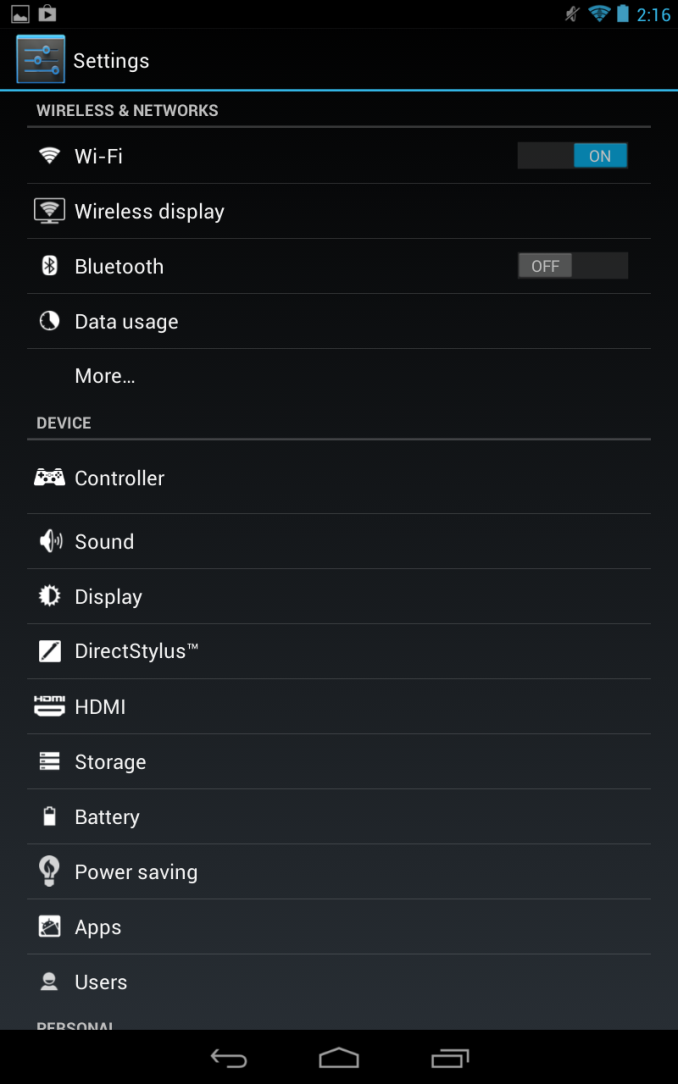
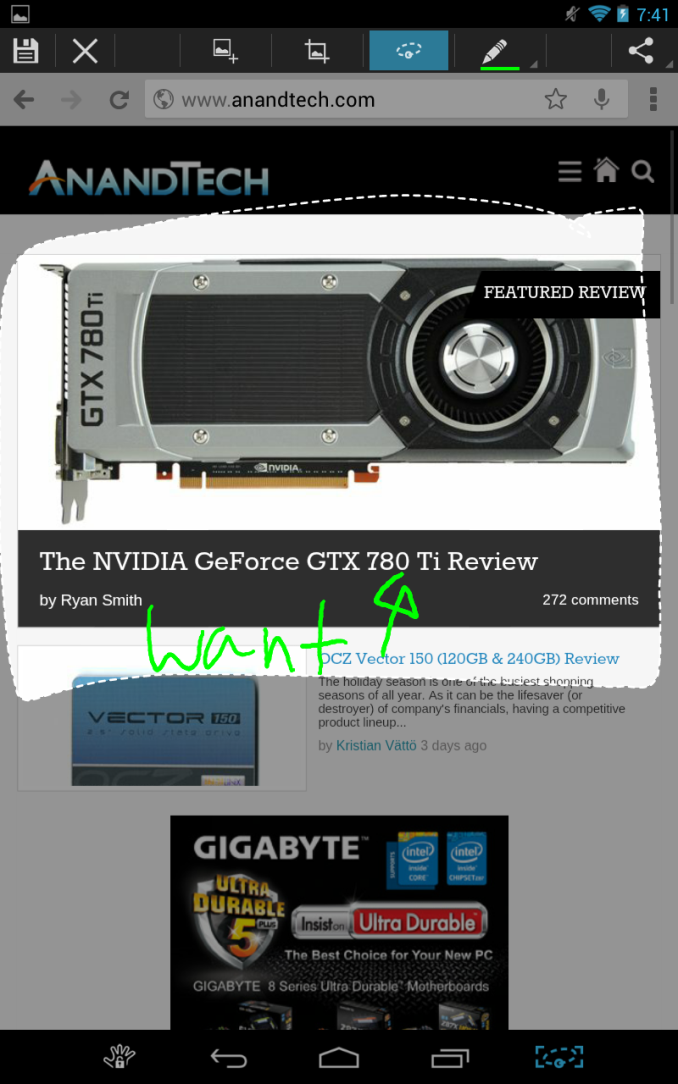


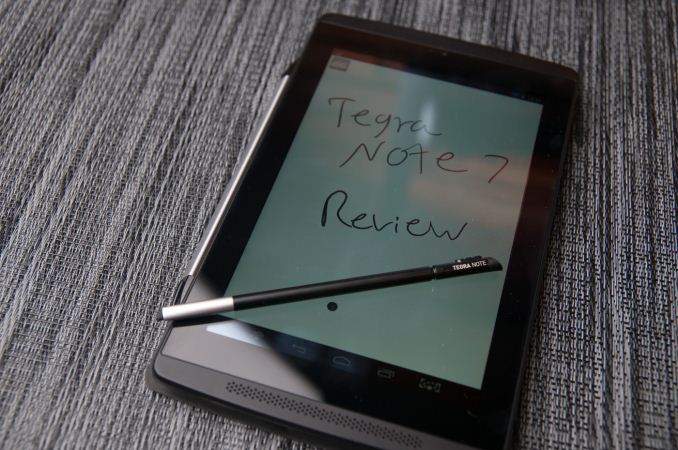
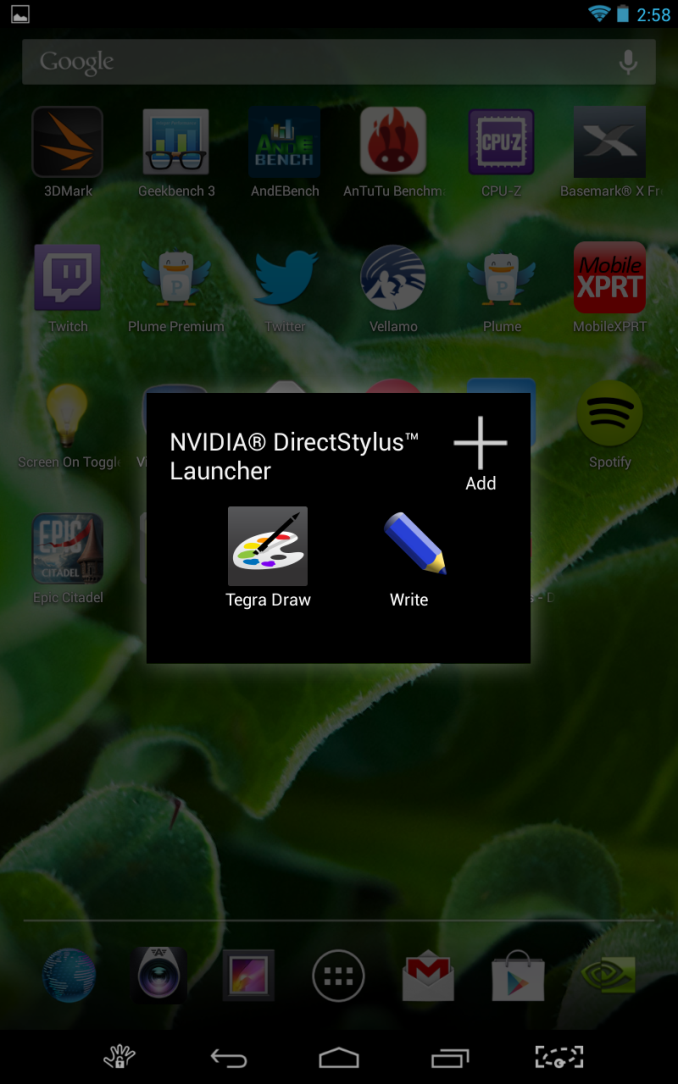
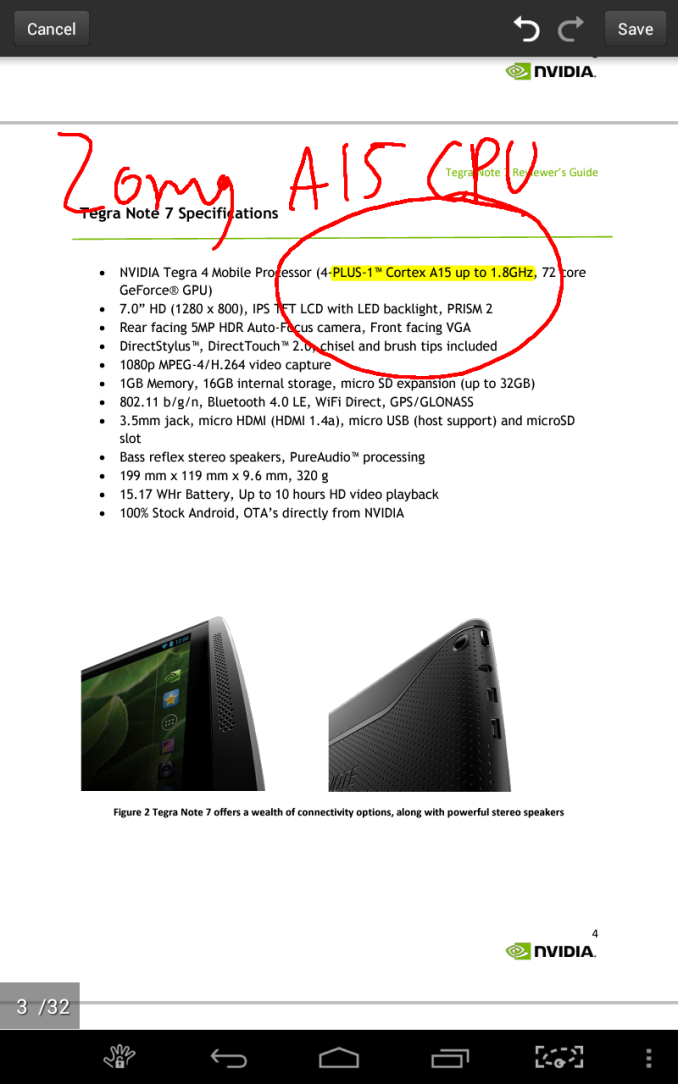

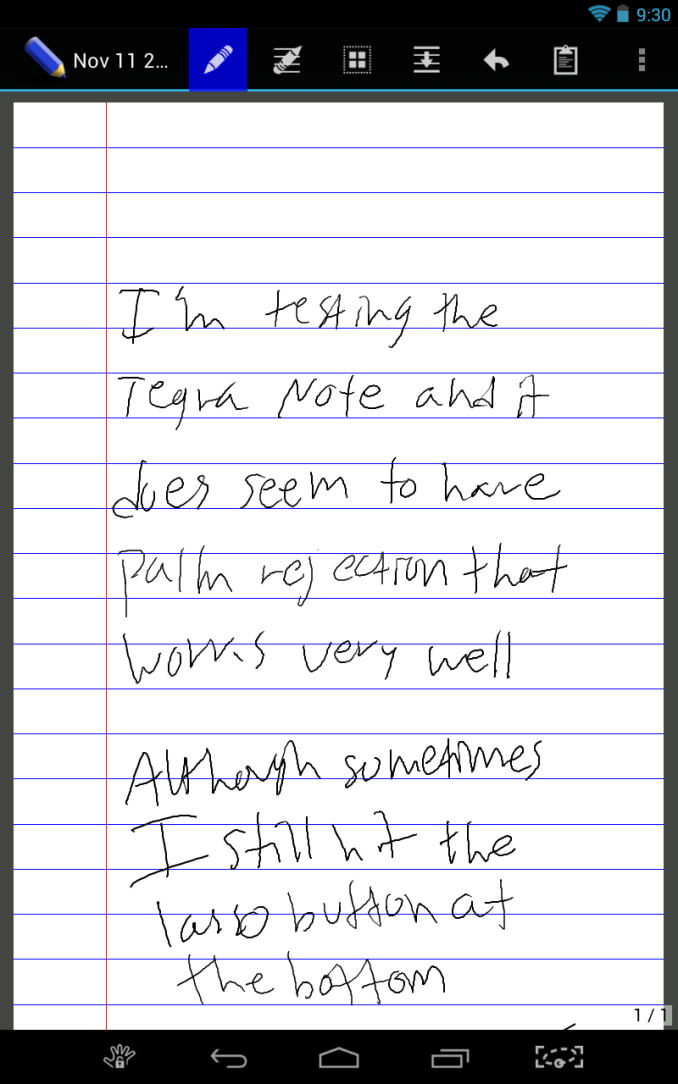








87 Comments
View All Comments
polaco - Tuesday, November 12, 2013 - link
they haven't been able to sell those tegra 4 chips to anyone. Many times those chips don't match the specifications they promise to hardware vendors and thus they have turned their back to NVidia. Now they are desperatly trying to find a market to tegra 4 chips at any cost.BryanC - Tuesday, November 12, 2013 - link
Do you have a source for this? Other than Mr. Demerjian? #sighKrysto - Tuesday, November 12, 2013 - link
I'm hoping for a 10-12" Tegra Note with a Tegra 5 chip and a higher resolution (at least 1920x1200), next year. Too bad Nvidia won't be making any ARMv8 chips next year, though, because I would've also liked that. Making Tegra 5 at 28nm will be pretty disappointing, too, but anyways, just show me a larger tablet with this tech.darwinosx - Tuesday, November 12, 2013 - link
I'd much rather seen an iPad Mini review since people will actually buy and use those unlike this hunk of junk.Raghu - Wednesday, November 13, 2013 - link
Pretty good demo of what its capablehttp://www.youtube.com/watch?v=wtZz4PjcAUk
darkich - Wednesday, November 13, 2013 - link
Why aren't you including the Note 3 in your benchmark charts?Please answer
will2 - Wednesday, November 13, 2013 - link
Brian, as you were understandably comparing the Tegra Note7 against N7.2 and commented on the N7.2 being better in having 2band WiFi, then WHY did you omit the N7.2 Wifi Benchark ? (useful to publish speed v range)Also, I realise the N5 is arguably too small to be considered a tablet, but being a high interest current model, would be very handy to update your tables with N5 benchmarks
Arbie - Wednesday, November 13, 2013 - link
I'm sad to see an Anandtech review distorted by personal preferences. Brian seems determined to deprecate or when possible ignore SD card capabilities. The ability to instantly swap huge amounts of media in and out is obviously important to anyone who seeking such a tablet for watching video. The Tegra 7 has this slot; the Nexus 7 sadly does not. But - this fact doesn't even make it into the concluding list of pros and cons!! Brian reluctantly gives the SD slot half of a disinterested sentence somewhere else, after the pages of fit and finish descriptions he is prone to. This is ludicrously unfair to the Tegra and a disservice to those readers who focus on the conclusions. I would pay $50 EXTRA to have the SD slot, on any tablet. The fact that Brian has no use for it doesn't mean it should be excluded from the review! Who's minding the store here?29a - Wednesday, November 13, 2013 - link
You should review the Sero 7 Pro. Better specs than the 1st Gen Nexus 7 for $50 less.Death666Angel - Thursday, November 14, 2013 - link
Costs exactly the same here in Germany. 170^€ for the 8GB Sero 7 Pro and 165€ for a 16GB Nexus 7 2012. It seems to only have DDR2 RAM (at least the sellers advertise it as such), it lacks some battery power, but it does have miniHDMI and a back camera. Note exactly sure those are better specs.